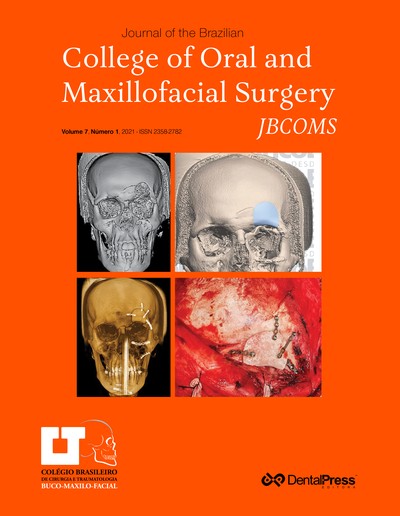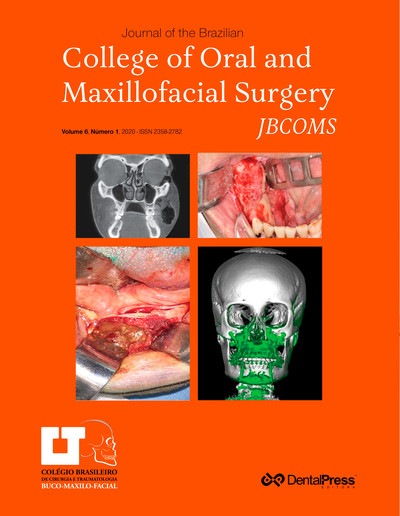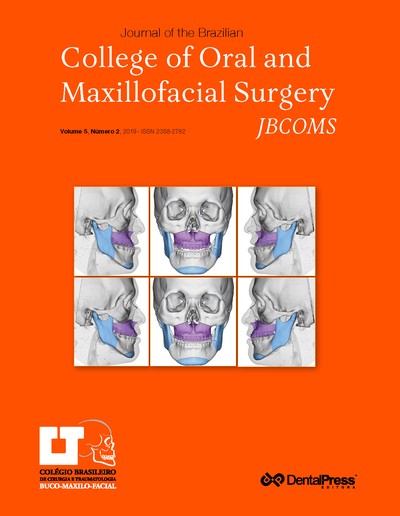
Closure of extensive oroantral and oronasal fistula due to maxillary tumor resection
Bruno Gomes Duarte, Victor Tieghi Neto, Eduardo Stedile Fiamoncini, Osny Ferreira Júnior, Eduardo Sanches Gonçales
The proximity of the alveolar process of the maxilla to the maxillary sinuses and nasal cavity can be related to communication between these structures due to loss of bone and soft tissue after treatment of tumors in this region. The untreated communication results in epithelization of its path, characterized as oronasal/oroantral fistula, and should be surgically treated by means of rotational or advancement flaps, with or without use of the buccal fat pad. Thus, the present paper aims to report a case of treatment of an extensive oronasal and oroantral fistula, resulting from the resection of a tumor in the maxilla. The fistula was closed by means of a sliding buccal flap associated with interposition of the buccal fat pad and a releasing incision perpendicular in the palatal region. During postoperative follow-up of 5 months, the presence of small remaining communications was observed, which were closed with new advancement flaps and inversion of the fistula borders. An association between the available techniques may be an option for closing of oroantral and oronasal fistulas, but difficulties may arise when aiming for full closure of extensive communications in a single procedure.
Keywords: Maxilla. Maxillary sinus. Oroantral fistula.
How to cite: Duarte BG, Tieghi Neto V, Fiamoncini ES, Ferreira Júnior O, Gonçales ES. Closure of extensive oroantral and oronasal fistula due to maxillary tumor resection. J Braz Coll Oral Maxillofac Surg. 2018 jan-abr;4(1):41-6. DOI: https://doi.org/10.14436/2358-2782.4.1.041-046.oar
Friday, May 03, 2024 07:16










